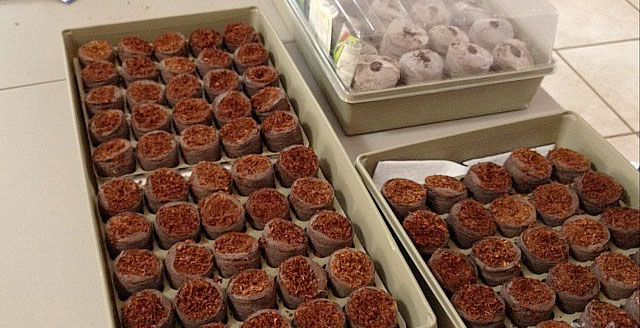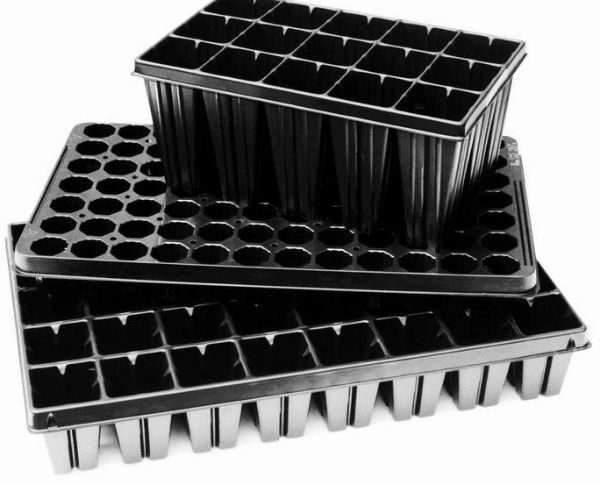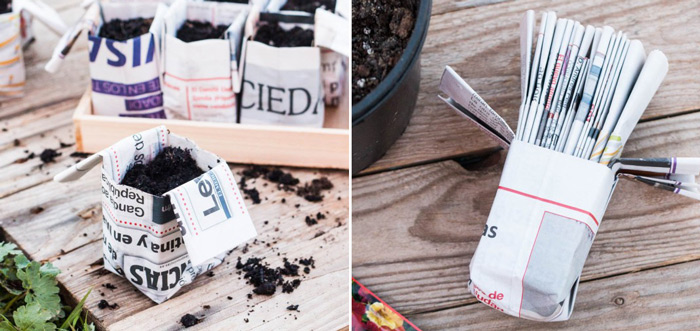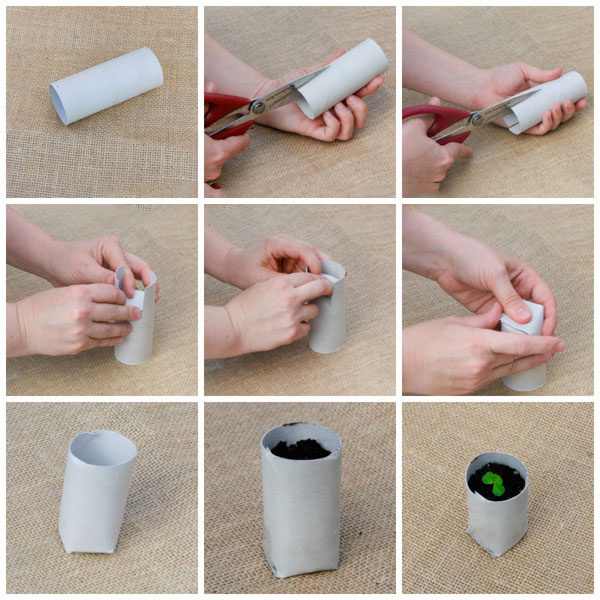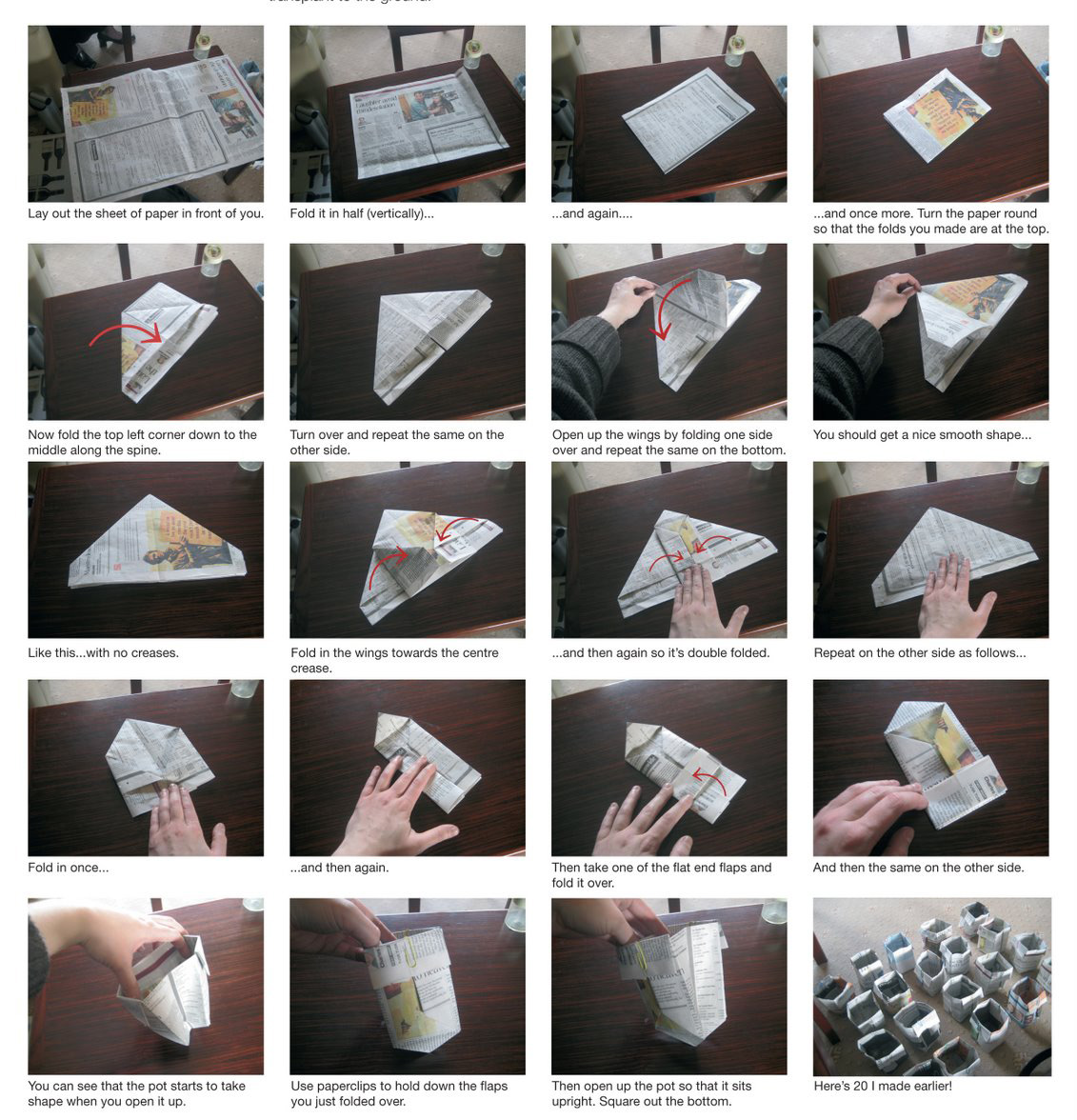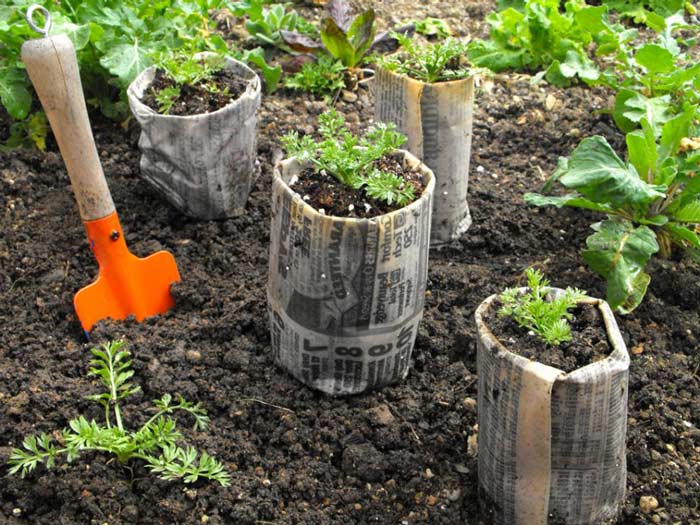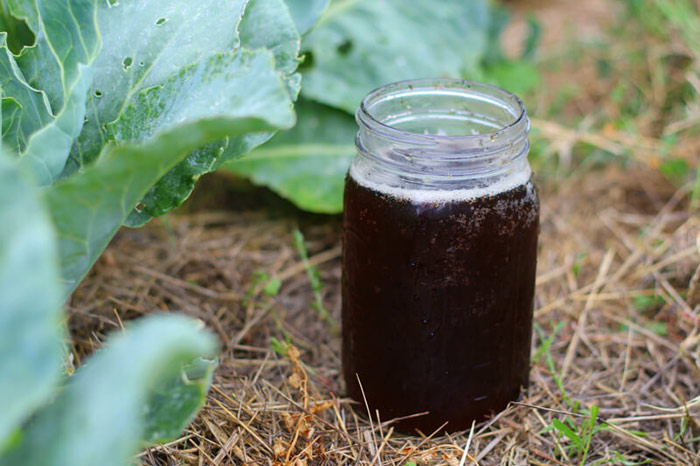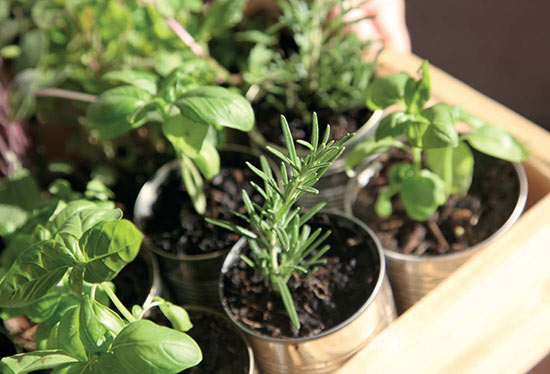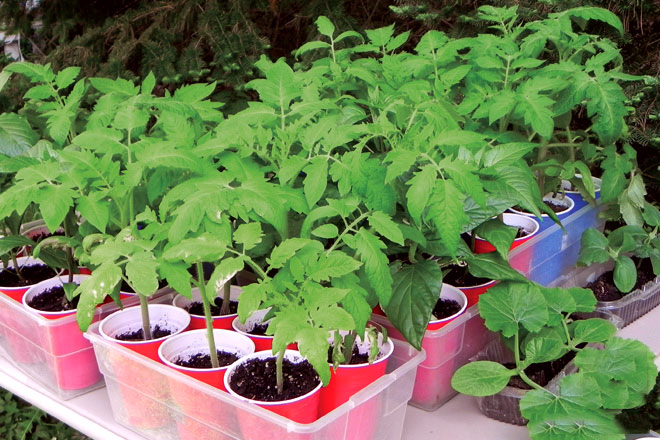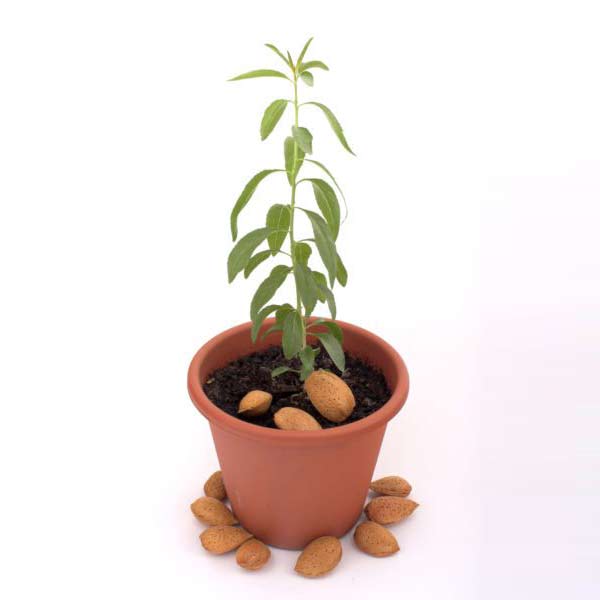Once we’ve figured out the seeding dates using the frost forecast schedule and purchased seeds, it’s time to prepare the soil and pots for seedlings.
Soil for Seedlings
The best soil for germinating seeds is not soil at all. Don’t get me wrong, garden soil is a wonderful source of minerals, organic material, and life overall… But it’s not the best option for starting seeds indoors. The choice of soil for germination is one of the most debated topics, and here I will provide my arguments in favor of mixes—though the choice is yours.
Why Are Mixes Better than Garden Soil?
Seedling mixes have one undeniable advantage—sterility. Disinfecting garden soil is not the most pleasant task, as I can attest. It’s not only a labor-intensive and messy process but also does not guarantee 100% success. I’m embarrassed to admit that once, after reading how wonderful and organic forest soil is, I used it. The result? Everything that sprouted “died in agony” from nematodes and mold, which I couldn’t manage to combat. So yes, while it may be nutrient-dense soil, it’s probably not the best option.
Buy a Ready-Made Mix or Prepare Your Own?
Ready-made seedling mix can be purchased almost anywhere, but if your garden center has coconut coir or peat, perlite and vermiculite , calculate the price difference compared to a pre-made mix. Packaged mixes should not contain forest soil (or, more precisely, greenhouse waste).
To create a good starter mix, you’ll need the following ingredients (in proportions):
- 2 parts peat or coconut substrate (coconut soil, coir, coconut peat) — to retain moisture.
- 2 parts sifted, finished compost or vermicompost. This ingredient is optional, as during the initial stage, plants get all the nutrients they need from the seed itself. Compost is not sterile and often contains seeds of various plants; so instead of tomatoes (or alongside them), you might get dandelions.
- 1 part perlite to lighten the mix and regulate moisture.
- 1 part vermiculite for drainage, nutrient and moisture retention, and looseness.
- If you use peat, you’ll need to balance its acidity with lime — a pinch per liter of peat. Sand can replace perlite or vermiculite.
Taking risks with garden soil might cost you 90% of all your seedlings, even with sterilization. The minimal benefit of the few surviving plants, which undergo natural selection, is dubious. A beginner gardener should not start with experiments—use a mix for your first start. It might make sense to blend garden soil and mix for the first transplant, once the seedlings have their first true leaves. At this stage, the seed’s nutrients are depleted, and roots outgrow the small containers. A mix with garden soil is considered acclimatization and preparation for transplanting into open ground.
Is There an Alternative to Soil?
Pure peat, coconut fiber, mineral wool, hydroponic materials, perlite, and vermiculite—these are some of the most discussed alternatives to garden soil. Each substrate has its niche applications and should be discussed separately, supported by scientific studies. That is what I’ll cover in future articles.
For now, let’s briefly mention peat pellets (or coconut ones). This increasingly popular method for germination and even growth until transplanting outdoors has its advantages and disadvantages:
- The simplest and relatively clean way to germinate seeds.
- Very hard to “overwater” seedlings; water quickly drains away from the spongy peat and doesn’t “stand,” as it might in plastic cups.
- Peat pellets have no expiration date, allowing cost savings in bulk purchases.
- Acceptable investment for gardening as a hobby.
Disadvantages of peat pellets:
- Peat dries out faster than soil, requiring closer attention to watering the seedlings.
- The netting that holds the peat is not biodegradable from all manufacturers and might show up all over the garden during digging or weeding.
- The substrate lacks nutrients and requires fertilization after the seeds germinate.
- Too much oxygen in peat and coconut can have a suppressive effect on the plant (it acts as a free radical, which the weak seedling has to fight against. More details can be found in the article about coconut substrate).
- Sterilizing peat tablets and soil with biological preparations containing Bacillus subtilis or Trichoderma is just as necessary as with garden soil.
Cups, pots, containers, trays for seedlings
Traditional seedling pots will always be indispensable, especially since now you can buy very lightweight, ergonomically shaped containers made of thin, flexible, and opaque material, such as food-grade carbon.
Purchased trays (cassettes) with a drip tray and mini-greenhouses are very convenient for germination but not for transplantation. In trays with connected cells, it’s challenging to control the spread of pests and diseases.
Purchased cardboard cups have two drawbacks: the inner surface is coated with a thin non-breathable film, and the second issue common to all cups is the truncated cone shape, which leads to inefficient use of the drip tray space. I don’t like plastic cups at all—algae grow in the transparent ones, the soil “sweats,” and it’s easy to overwater the seeds.
I prefer homemade newspaper cups on trays. Adjusting the size, managing moisture, and transplanting is especially convenient with cups made of newspaper or kraft paper, although throughout my life, I’ve seen my grandfather stockpile hundreds of plastic cups and be entirely satisfied with them. But if plastic cups are not for you, keep reading.
Newspaper cups for seedlings can be crafted in many different ways. Below are two tutorial videos that show how to make your own seedling cups from paper.
Modern printing ink is non-toxic!
https://www.youtube.com/watch?time _continue=9&v=7dlGQP81yfo
A couple of masterclasses on making pots from newspaper and cardboard toilet paper rolls:
Nonwoven fabric bags are another excellent and cost-effective option for seedling “containers.” In a few days, I plan to make some and will post a report; look for the originals on the Procvetok website and YouTube channel.
“Snails” made from foam underlayment for laminate flooring are currently at the height of popularity thanks to YouTube bloggers, but I suggest refraining from using materials not intended for contact with water.
Plants can be transplanted into larger containers or open ground directly in the newspaper pots, as the paper breaks down very quickly in soil. In recent years, printing ink has been regarded as a non-toxic product suitable for recycling, but newspapers can always be substituted with any absorbent paper.
Now that we’ve dealt with soil and pots, the next step is sowing seeds and providing proper care for the seedlings.



